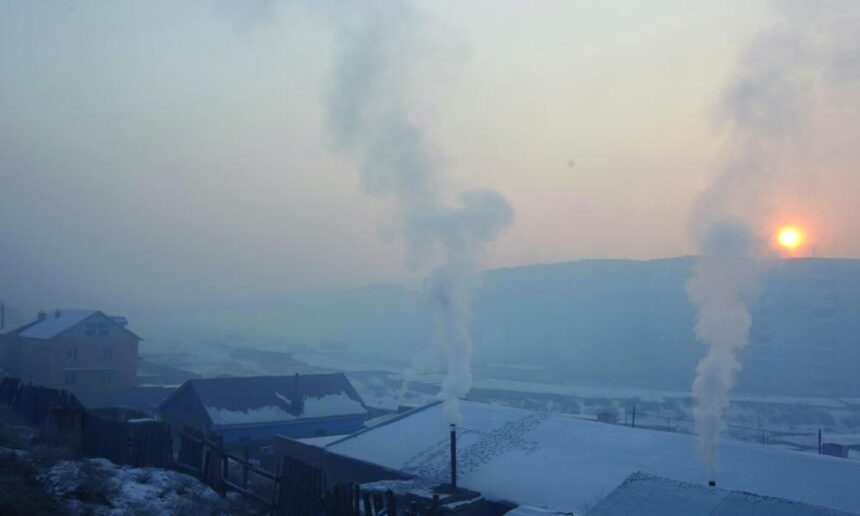Mongolia’s real estate market today resembles a toddler. Thousands of apartments and other buildings in Ulaanbaatar do not meet the basic requirements of modern urban planning and they lack good infrastructure. The buildings start falling apart and losing their appeal even before they are completed.
Newly built roads in the city are being dug up every year. Due to a lack of drainage systems, the roads become bumpy in the spring, full of water in summer, and they receive patches in autumn. Trillions of tugrug are locked in the construction industry today because there are currently tens of thousands of apartments that do not meet real market demand and have unrealistically high prices. Many of these apartments are not being sold because they do not provide access to public transportation, hospitals, schools, and kindergartens. The industry has become a mess because construction companies have been operating real estate businesses. As a result, it has become impossible to estimate the real value of real estate, including land and buildings.
BLEAK OUTLOOK
Since the Democratic Party (which has held ruling power for the last four years) announced the low-interest mortgage program, thousands of families have purchased expensive apartments with an annual interest rate of eight percent. The government has also provided soft loans worth hundreds of billions to support the domestic manufacturing of construction materials. The production of cement, for example, has already exceeded domestic demand.
Following the burst of an economic bubble that was mainly driven by mining, the real estate market is also coming back to a more realistic form. However, due to the government policies mentioned above, the prices for apartments are not going down, while the construction companies that acquired loans are now in a difficult financial situation. If these companies do not lower their prices, they will not be able to sell the apartments. Nevertheless, they are now trapped in a corner with banks after spending a lot of time hoping that the government would help them sell the empty apartments they built. In fact, within one or two years, the banks will have no choice but to seize the buildings that were built with loans and sell them at prices 40 percent less than their current market value.
The five percent housing mortgage program implemented by the government is increasing the government’s debt and is not sustainable in the long run. The program will stop after the upcoming general elections. If the government had introduced an arrangement where the principal payments were shared, they would not have created debt to last the nation for decades.
Time has shown that Mongolia’s real estate market should no longer be on the path that it has been on until now.
THE NEED TO DIVERSIFY
In Mongolia, there is no difference between a real estate developer and a construction company. Our construction companies develop real estate, construct buildings, sell them, and become responsible for the maintenance of the building later on. It has become increasingly difficult to determine the value and quality of buildings in Mongolia, because their construction takes place under a single principle of minimizing cost.
A real estate developer normally draws a project on paper first, finds funding, has construction companies do the building work, ensures that all legal requirements (such as environmental and safety regulations) are met, and sells the property afterwards. The developer is an individual or a company who knows the market well and is capable of buying the land, finding the resources to build, and knows how to obtain project financing. The greater a reputation for successfully completed projects a real estate developer has, the more trust other partners place in them. Banks and financial institutions that provide funding regularly send their experts to check up on the progress of a project. If required, they appoint their own people to ensure that a project is completed.
A construction company, on the other hand, provides services to the real estate developer and has the primary responsibility of building the project according to blueprints. Construction companies usually receive 20 to 30 percent of a project’s profits. The construction work is overseen by the real estate developer and their architect. This means that there is oversight of the process, starting from the quality of construction materials to dust levels.
THREE NECESSARY STEPS
Three reforms are required in the real estate industry to make a substantial change to the construction industry. Those three steps are zoning, applying real estate taxes, and creating a public database of property.
First of all, the capital needs to have different zoning for land, such as residential, industrial, and green. These zones have to be differentiated and legalized with clear requirements and standards. Currently, there is no such zoning set, let alone clearly set boundaries between public and private land, which is the reason why our urban planning has never been anything more than an idea on a piece of paper.
Secondly, real estate valuations need to be more accurate, and taxes should be imposed. Half of the tax revenue should be spent on maintenance of properties. Otherwise, real estate will keep losing its value.
Thirdly, a public domain database needs to be created so that everyone can have access to all property information, such as land ownership, what property taxes are being paid, what buildings are being constructed, and when they are to be completed.
It is expected that the newly elected authorities of the capital and local administration units will take these steps after the elections. People also hope that construction companies will select jobs that they can best carry out, and that the industry allows that.
Trans. by B.AMAR
2016.04.27












